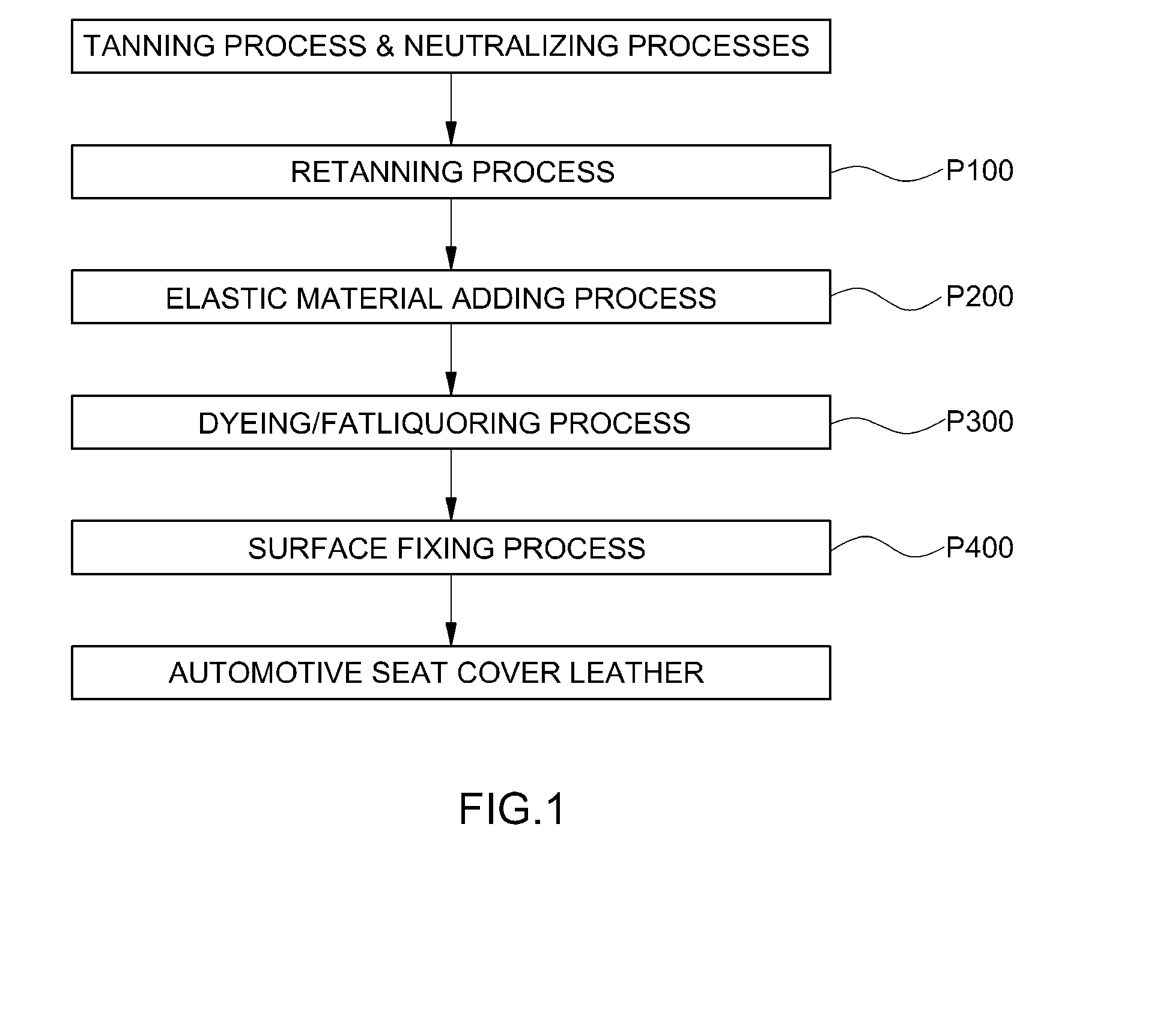Vehicle seat cover leather having excellent durability and method of fabricating the same
a technology of leather seat cover and excellent durability, which is applied in the direction of tanning treatment, leather surface finishing, dyeing process, etc., can solve the problems of spoiling the appearance of the automotive seat, general uniform physical properties, and general dissatisfaction of the consumer with the vehicle, so as to improve the physical properties of the leather, prevent a wrinkle, and excellent binding properties
- Summary
- Abstract
- Description
- Claims
- Application Information
AI Technical Summary
Benefits of technology
Problems solved by technology
Method used
Image
Examples
example 1
[0050]In the preparing process of the method of fabricating the automotive seat cover leather having excellent durability, with respect to 100 parts by weight of leather, 5 parts by weight of lime was added under an alkali condition to remove hairs, fat, soluble proteins, etc., for 40 hours. In the tanning process, with respect to 100 parts by weight of leather, 6 parts by weight of chrome was permeated and fixed in the leather for 8 hours. In the neutralizing process, 6 parts by weight of sodium bicarbonate was used to neutralize to pH 5.5.
[0051]After the tanning process and neutralizing process, with respect to 100 parts by weight of leather, 100 parts by weight of water was added into a drum, after which, in the retanning process, with respect to 100 parts by weight of leather, 100 parts by weight of water, 5 parts by of weight mimosa, 5 parts by weight of acryl-based syntan, parts by weight of resin-based syntan, 5 parts by weight of protein-based syntan were sequentially added ...
PUM
| Property | Measurement | Unit |
|---|---|---|
| Percent by mass | aaaaa | aaaaa |
| Percent by mass | aaaaa | aaaaa |
| Percent by mass | aaaaa | aaaaa |
Abstract
Description
Claims
Application Information
 Login to View More
Login to View More - R&D
- Intellectual Property
- Life Sciences
- Materials
- Tech Scout
- Unparalleled Data Quality
- Higher Quality Content
- 60% Fewer Hallucinations
Browse by: Latest US Patents, China's latest patents, Technical Efficacy Thesaurus, Application Domain, Technology Topic, Popular Technical Reports.
© 2025 PatSnap. All rights reserved.Legal|Privacy policy|Modern Slavery Act Transparency Statement|Sitemap|About US| Contact US: help@patsnap.com

